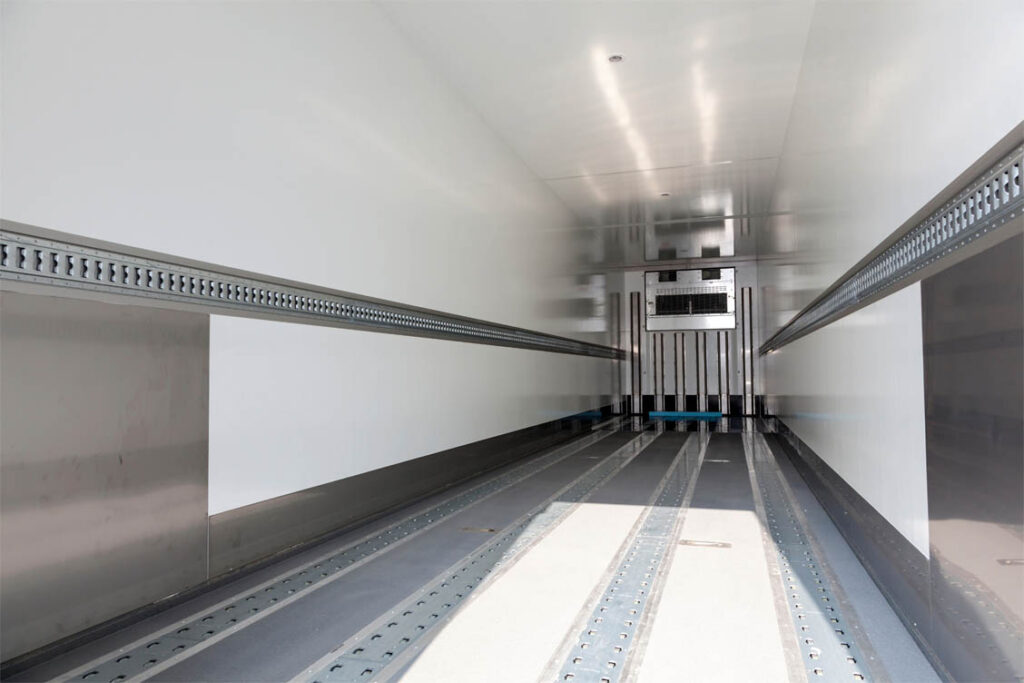
In today's transportation and logistics sector, cold chain management holds great importance. Transporting temperature-sensitive products is one of the most critical issues in this field, and the special vehicles used in this process are called “refrigerated vehicles”. Refrigerated vehicles are vehicles with cooling features that ensure the preservation and transportation of food, medicines, and other sensitive products at appropriate temperatures. Refrigerated transportation plays a vital role in guaranteeing the freshness and quality of products. These questions we encounter in the transportation sector are among the factors that directly affect the quality of services provided by the company and customer satisfaction.
What is Refrigerated Transportation?
Refrigerated transportation is a specialized logistics service that ensures the safe transport of temperature-sensitive products within specific temperature ranges. Especially focus is on foodstuffs, frozen products, and perishable fresh vegetables and fruits. Medical supplies requiring special storage conditions, such as vaccines and serums, as well as chemical substances, are also transported via refrigerated transportation.
The most important feature of refrigerated transportation is having vehicles capable of transporting products within the appropriate temperature range without spoilage within the cold chain. These vehicles maintain the necessary temperature values from the production point to the consumption point. Refrigerated trucks and trailers are equipped with special insulation systems and cooling units. With advancements in modern technology, these vehicles are equipped with temperature monitoring systems, GPS location tracking, and remote control capabilities. Any temperature fluctuations during transportation can be detected immediately and interventions can be made.
What is a Refrigerated Vehicle?
Refrigerated vehicles are insulated with walls, floors, and doors designed to minimize heat exchange between internal and external areas, and these areas are equipped with mechanical vapor compression cooling systems that have heat absorption properties. These special vehicles are vital in maintaining the freshness and quality of the transported products. Different refrigerated vehicles are designed depending on the type of product, quantity, transportation temperature, and duration. These vehicles are especially used in the food industry for the safe transportation of sensitive goods such as fresh vegetables, fruits, meat, and dairy products. In urban distribution, panel van-type refrigerated vehicles are quite common for quickly delivering cooled or frozen products at low temperatures.
Features of Refrigerated Vehicles
The features of refrigerated vehicles are specially developed to preserve the freshness of the transported products. In these vehicles, flexible steel and copper pipes are used in the cooling circuit to enhance the efficiency of the cooling system. Since the vehicle has cooling equipment, it allows for the safe transportation of products even in different climate conditions. Additionally, refrigerated vehicles are mounted on rubber blocks that prevent shocks and damage; this ensures load stability and reduces potential adverse effects during transportation.
The thickness of the panels used in the construction of the body is of great importance for maintaining temperature balance. The panel thickness of the body shows durability within the -18 to 0 degree range, with side panels varying between 50 mm and 80 mm. The roof thickness is similar and provides sufficient clearance. The front wall thickness ranges from 80 mm to 100 mm, providing increased resistance against external factors. The floor panel thickness varies between 100 mm and 120 mm, while the rear door thickness is 80 mm and reinforced with a stainless steel door frame.

How Much Do Refrigerated Vehicles Cost?
The prices of refrigerated vehicles vary depending on factors such as vehicle capacity and cooling degree. For example, a refrigerated vehicle with a capacity of 4 m³ costs between 95,000 TRY and 120,000 TRY, and can cool at +4°C. For those seeking larger options, vehicles with a capacity of 15 m³ and a cooling temperature of -18°C are priced between 150,000 TRY and 200,000 TRY. The largest capacity refrigerated vehicles, with 30 m³, can start from 250,000 TRY and go up to 300,000 TRY with a cooling temperature of -18°C.
How Many Pallets Does a Refrigerated Vehicle Hold?
Refrigerated vehicles are important logistics tools known for their carrying capacities. The load capacity of a refrigerated vehicle depends on its size and design. However, on average, refrigerated vehicles with a capacity of around 1 ton are ideal for safely transporting various products of this weight. Especially, refrigerated vehicles that can carry 6 pallets, each measuring 8×120 cm in length, are widely preferred for transporting foodstuffs and other sensitive products.



